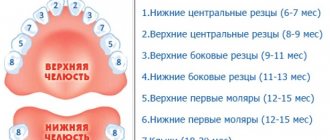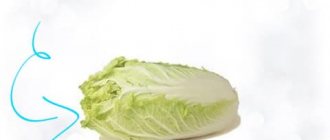Colic and gas: what's the difference?
Gases in infants: symptoms and solution to the problem
Infant flatulence is a completely normal phenomenon, which is caused by the formation of the infant’s digestive system. Every day the baby eats more and more milk or formula, and the intestines do not have time to cope with it. Undigested food remains settle on its walls. They begin to ferment, and air bubbles accumulate in the baby’s gastrointestinal tract.
If the baby is tormented by gas, his tummy swells and becomes hard to the touch. The child farts often and may become capricious because of this, more often during feeding. Sometimes the baby becomes constipated due to gas. There are no other symptoms of childhood flatulence. This is how it differs from infant colic, during which the child behaves completely differently.
If your baby is suffering from gas emissions, you can alleviate his condition in the following ways:
- Make sure that the baby does not swallow excess air during feeding. If you are breastfeeding, your baby should wrap his lips tightly around the entire nipple and areola. If your baby is on IV, hold the bottle at an angle of 45°C and do not shake the formula when preparing it.
- After the baby has eaten, he needs to be held in a column for about 10 minutes so that he can burp out excess air.
- The baby should suck the breast or bottle steadily. Too fast or slow sucking leads to the fact that the baby begins to swallow excess air.
- Half an hour after each feeding, do gymnastics with the baby: press his legs to his stomach, and then straighten.
- If you are breastfeeding, exclude fresh onions, cabbage, legumes, chocolate, yeast dough and carbonated drinks from your diet. Give your child Koli Krokodil drops. They contain dill, which relieves bloating, breaks down gases and helps them exit the body more easily.
Colic in infants: symptoms and solution to the problem
Infant colic begins in the second week of life and ends when the baby is 12-16 weeks old. During attacks of colic, the baby begins to scream deafeningly. Colic crying lasts up to three hours at a time and repeats every day at approximately the same time, usually in the evenings. When a child starts crying, it is impossible to calm him down. During attacks, the baby strains, blushes, clenches his fists, pulls his legs towards his stomach, and arches his back. This condition is very unpleasant, although it is not a disease. Colic torments the baby due to the imperfection of his nervous and digestive systems. As soon as the child grows up, his attacks will stop.
Important!
Gas can cause colic. Air bubbles press on the intestinal walls. Spasms begin, which cause discomfort to the baby and make him cry inconsolably. Colic can bother a baby not only due to flatulence, but also due to increased excitability, acid reflux or dysbiosis.
It will not be possible to completely rid your baby of colic, but you can alleviate his condition now:
- Give your child a belly massage regularly. To do this, place it on its back and move your palm clockwise around the navel several times, pressing slightly.
- Apply a heating pad with warm water to your baby's belly.
- Place your baby face down on your stomach (skin to skin) to help him calm down.
- Turn on white noise for your baby (sounds of a vacuum cleaner, washing machine, hair dryer or audio recording with nature sounds).
- In the evenings, bathe your baby in warm baths with a decoction of chamomile or string. Start giving your child Koli Krokodil anti-colic drops. Their natural composition comprehensively solves the problem of infant colic: dill eliminates gas formation, lemon balm calms the nervous system, anise relieves spasms, mint improves digestion. Within ten minutes after taking the drops, the baby will feel better and fall asleep sweetly.
Treatment of colic in a newborn: traditional methods
If the doctor has confirmed that the child has colic , your task is to try to help him by relieving the pain. As a rule, the best way to deal with colic in the abdomen is: “dill” water, warming the baby’s belly and gas tubes. But every baby is unique, so this “traditional” set may become useless in a particular case. Try different methods to find the one that works for your child.
Warm your baby's tummy to relieve pain. You can do this with an ironed, warm diaper, or place your baby with his tummy on your stomach, gently stroking his back.
A light abdominal massage, as well as special poses, can help get rid of accumulated gases in the intestines. For example, you can bring your baby's legs to your stomach and hold them in that position. Or place the baby stomach down on the mother's lap while stroking his back.
Symptoms of colic in a baby
Colic in newborns can easily be confused with an intestinal disease, since the symptoms are similar in many ways, but it is still possible to distinguish the manifestation of colic in a baby by certain signs.
- Before the attack begins, the child may toss and turn, twist his face and demonstrate his anxiety in every possible way. When the attack begins, the baby whines, presses his hands to his tummy, and arches.
- When a spasm occurs, the baby's face becomes red and the muscles tense. The hands are clenched into fists, and the legs are bent and straightened.
- The baby may squint or open his eyes wide.
- Short breath holds are possible.
- When it becomes unbearable to endure, the baby begins to cry. Usually this happens suddenly.
- During an attack of colic, the baby's tummy tenses and becomes hard.
- During intestinal colic, the newborn may refuse to eat, but the rest of the time he is alert and eats with appetite.
- Colic usually occurs at the same time, often after feeding, if the mother is not eating properly and eats prohibited foods.
- Colic in a newborn subsides as soon as he burps or goes to the toilet.
How to treat at home?
medications and dietary supplements are most often (Acipol, Bifidumbacterin, Bifiform, Linex, Hilak Forte), enzymes (Creon, Lactazar) or preparations containing “simethicone” (Bobotik, Simethicone, Espumisan ).
Do not be surprised if the doctor prescribed the drug in capsules. You just need to carefully open the capsule and dissolve its contents in a small amount of breast milk or water.
Among the traditional methods of treating colic, herbal medicine can be used. To do this, before each feeding you need to give your baby a few sips of warm herbal infusion. Chamomile, lemon balm, fennel, ginger or mint will help relax the gastrointestinal tract and prevent pain. You should give no more than one quarter cup per day.
Dill water will help with stomach cramps . To prepare it, you need to add one teaspoon of dill seeds to a glass of water. You can give your baby this water 1-2 times a day, but no more than 10-15 grams at a time.
A warm bath with chamomile decoction can also relieve intestinal spasms .
is a good remedy for colic in a baby . To do this, you need to stroke the baby's belly clockwise, making approximately 10 turns. Next, you need to alternately bend and unbend his legs 6-8 times, pressing them to his stomach.
You can turn the baby over on his tummy and stroke his sides, above the pelvic bones. Movements should be made from the stomach to the lower back. This massage is also a good remedy for constipation.
It is important to feed infants at specific times. The interval between feedings must be at least two hours. If a child eats too often, it will negatively affect the digestion process. The baby’s body will not have time to completely digest the milk, as a result of which the fermentation process will begin, increasing gas formation.
How to massage a newborn baby with colic?
Does a garlic enema help get rid of worms, and how to do it correctly? Find out in this article.
What can you eat after food poisoning? https://vashjeludok.com/zheludok/lechenie/chto-mozhno-kushat-posle-otravleniya.html
Help and recommendations
To prevent colic in newborns, the following rules must be followed:
- Place your baby on his tummy as often as possible. It is very useful to place the baby on the mother's stomach, thus ensuring close contact between them. In this position, the tummy warms up and the colic subsides.
- It is very important to learn how to properly attach your baby to the breast, excluding air from entering during feeding.
- After feeding, you should hold the baby in the upright position until excess air is released. After this, the baby will feel much better.
- Mom should follow a diet and certain nutritional rules.
- It is imperative to do gymnastics with your child, which will not only help cope with colic, but will also have a general strengthening effect on the body.
- In addition to gymnastics, it is useful to massage the tummy - use light stroking movements in a clockwise direction to massage the belly around the baby’s navel.
READ ALSO: Effective treatment of irritable bowel syndrome with folk remedies
Folk remedies
The use of various folk remedies will also help with colic in newborns. The most effective products include the following:
- Fennel. The fruits of this plant can be purchased at the pharmacy. To prepare the product, just take a large spoon of seeds and pour 200 ml of boiling water over them. After an hour, strain and give to the child quite often, but in small portions. For colic in newborns, you should offer them no more than a tablespoon at a time.
- Dill water. To make it, you can take a tablespoon of the seeds of this plant, add boiling water to them and cover with a lid. Leave for one and a half hours.
- Anise. Add a couple of cups of water to half a teaspoon of seeds and bring to a boil. After 10 minutes, filter and cool. Leave the resulting product in the refrigerator for 3 days. Every day the baby should drink 3 drops of this water. For this purpose it is worth using a pipette.
Prevention of colic
To prevent colic in her baby, a nursing mother must follow a certain diet. After all, everything she eats ends up in breast milk.
Therefore, it is recommended to eat foods rich in fiber with caution (eggplant, cabbage, apples, wholemeal bread), as well as foods that can enhance the fermentation process (grapes, kefir, legumes). During feeding, pay attention that the baby should latch onto the nipple and most of the areola of the breast. It is important that the baby does not suck on his own lip. If the pressure is not tight, the child may swallow air.
Massage can be useful not only when colic has already appeared, but also as a preventive measure against this disease. After feeding your baby, you can make light circular movements on his tummy.
To prevent colic, it is recommended to keep the baby upright after feeding. Thus, the air swallowed by the child will be released from the stomach. In addition, between feedings it is worth turning the baby on his tummy for about 7-10 minutes. It is believed that those children who spend a lot of time lying on their stomachs pass gas more easily and have fewer problems with bowel movements.
Thus, colic is a phenomenon that often occurs in newborns. Most often, they stop tormenting the child by 3-4 months of his life.
Characteristic symptoms
Most often, the symptoms of colic can be reduced to the behavior of the baby. First of all, the child’s strong and loud crying is noted; it can begin suddenly and stop in the same way. Since colic is pain that occurs in the abdomen, the child may kick his legs, arch, or try to “bite” his arm.
Sometimes colic in babies occurs “by the hour.” They can begin 20-30 minutes after feeding in the evening, after which, after about 3 hours, they end.
Additional symptoms of colic include a flushed face, tucked legs, a slight arch in the back and a slightly swollen tummy.











